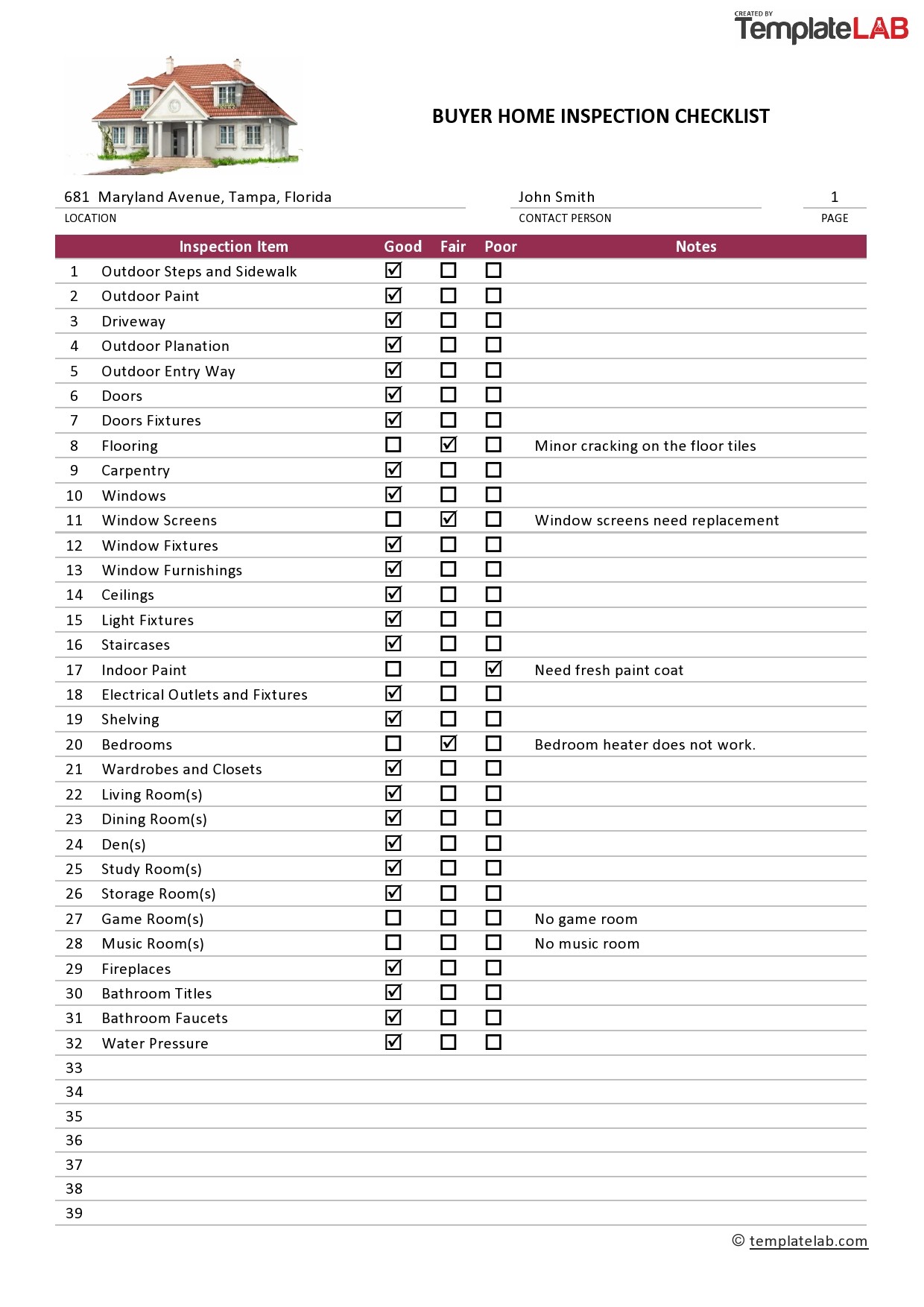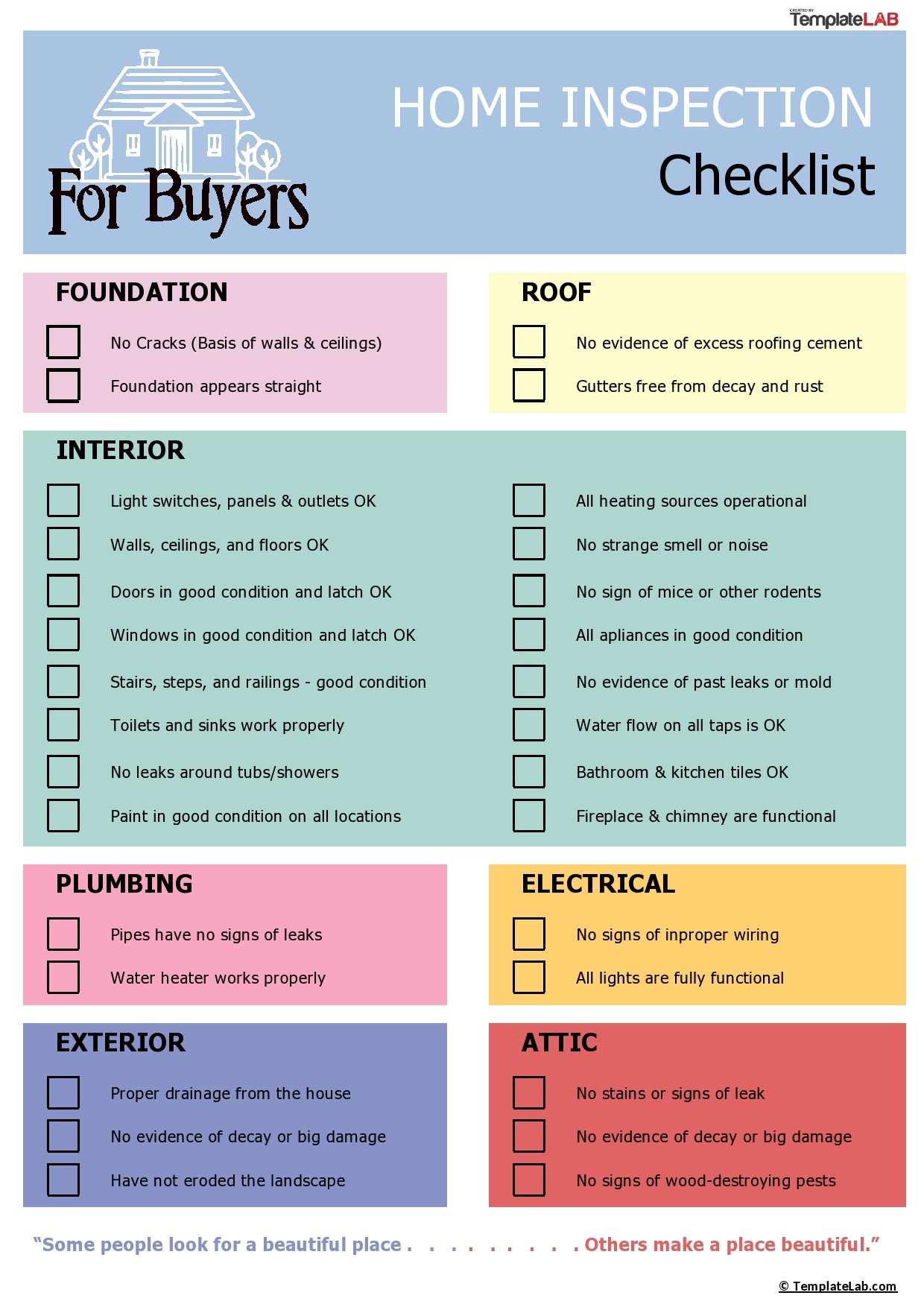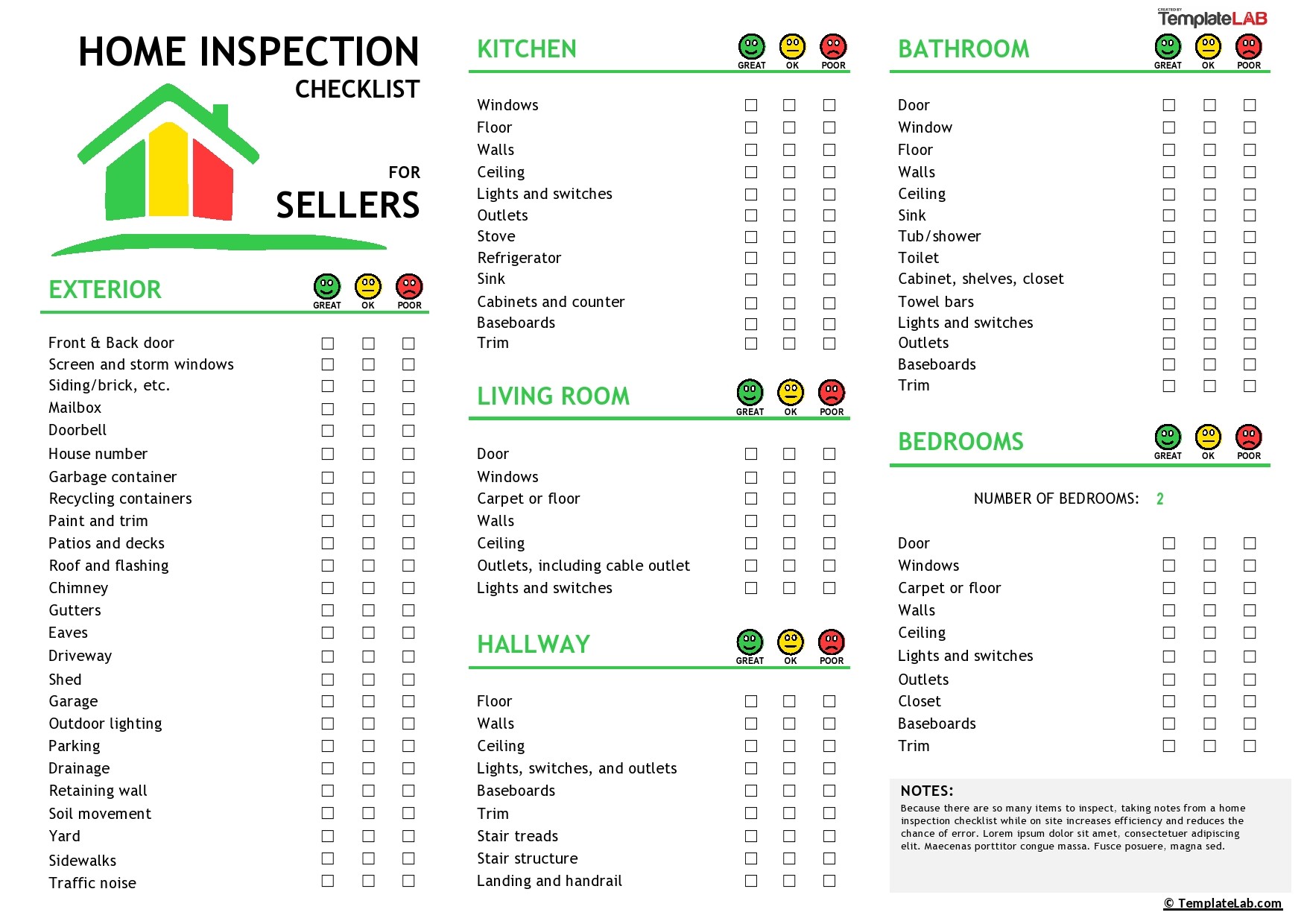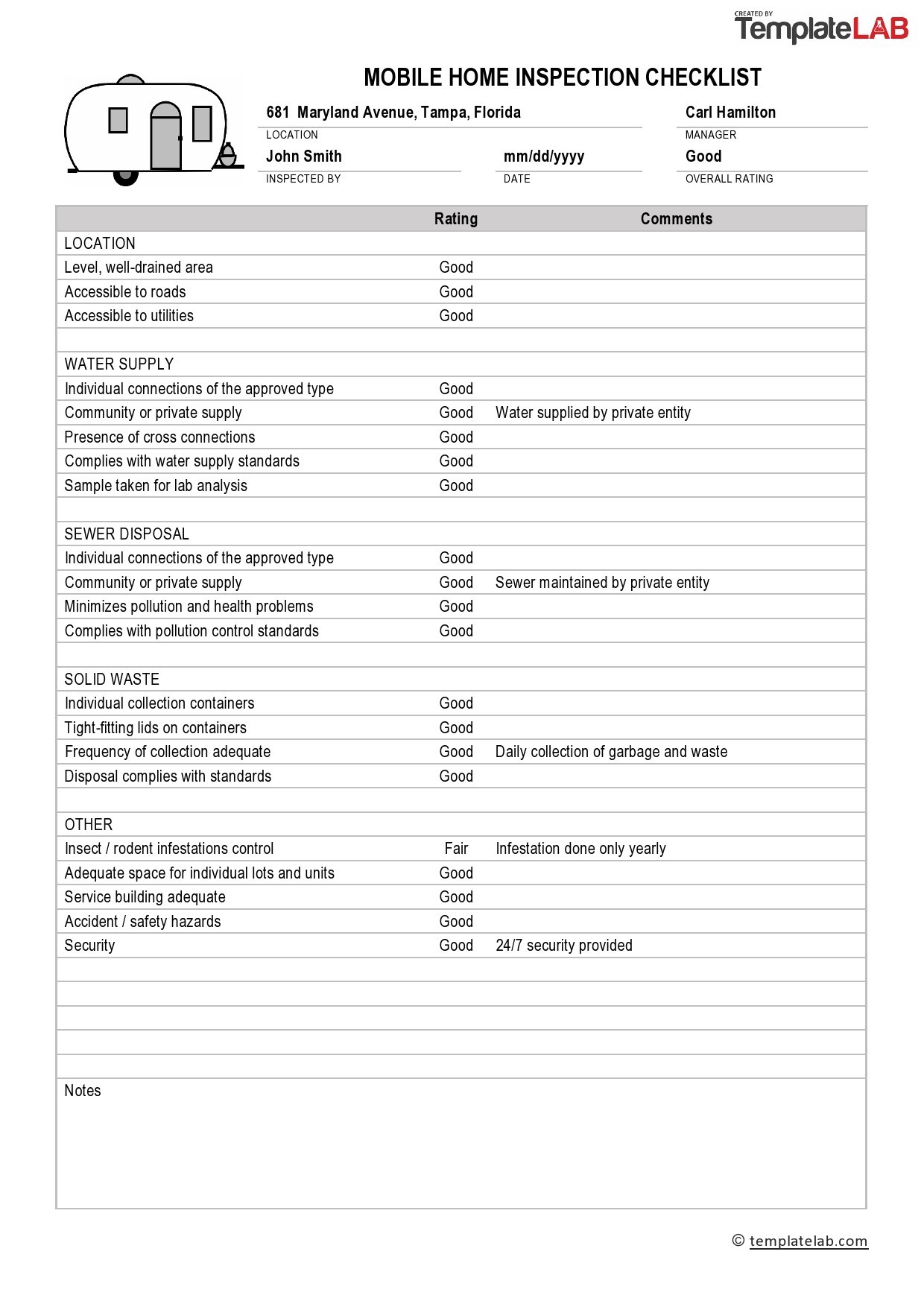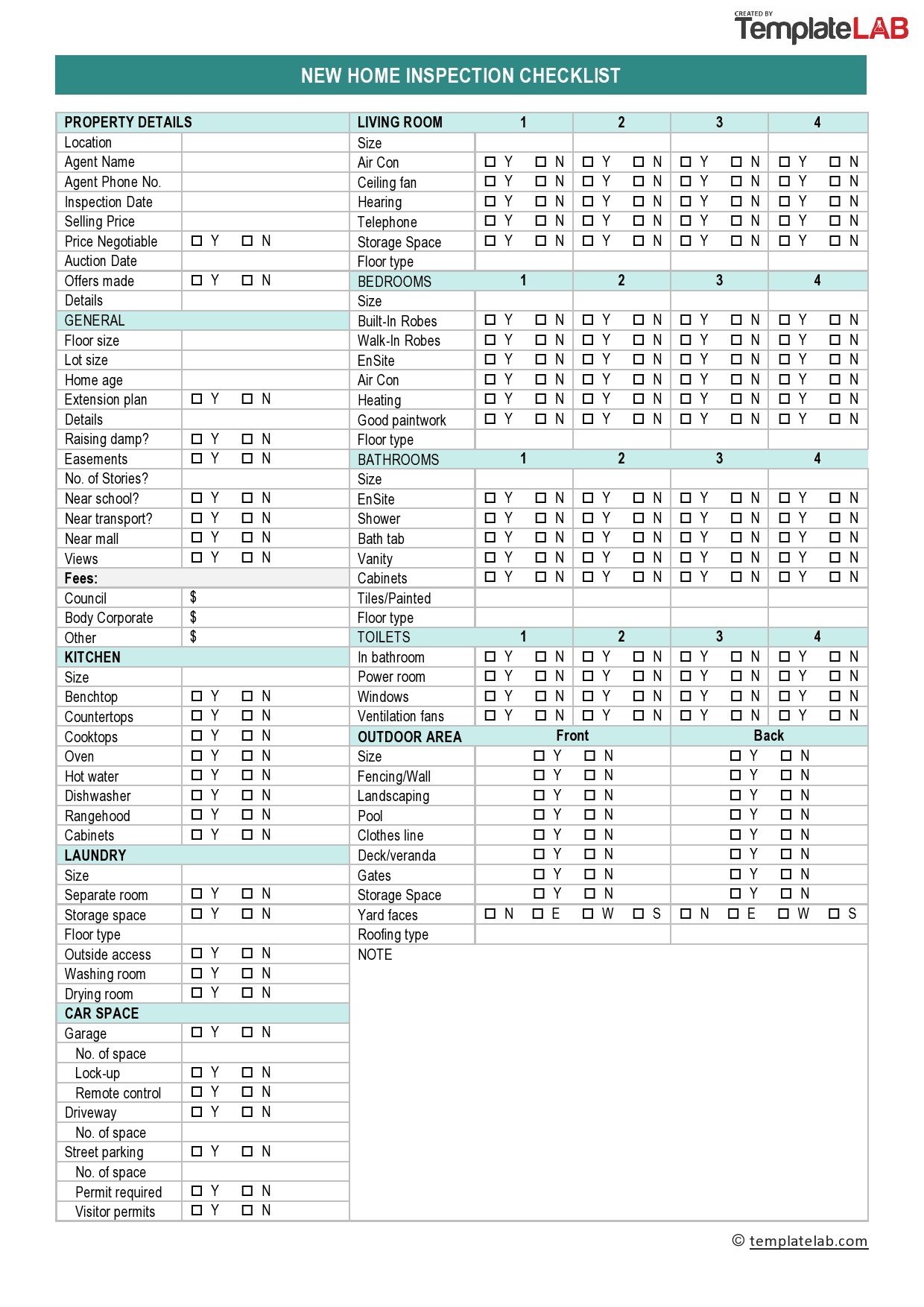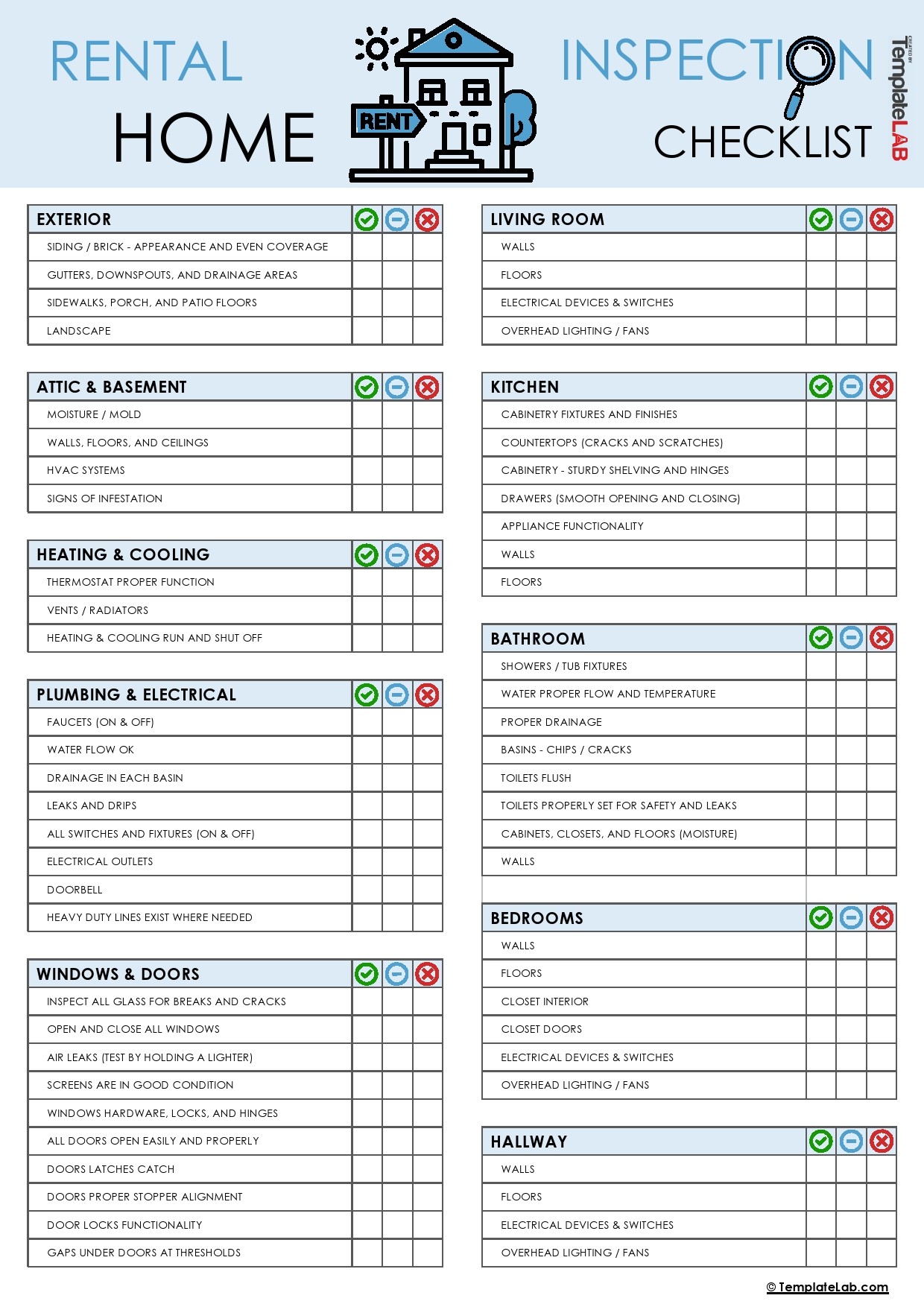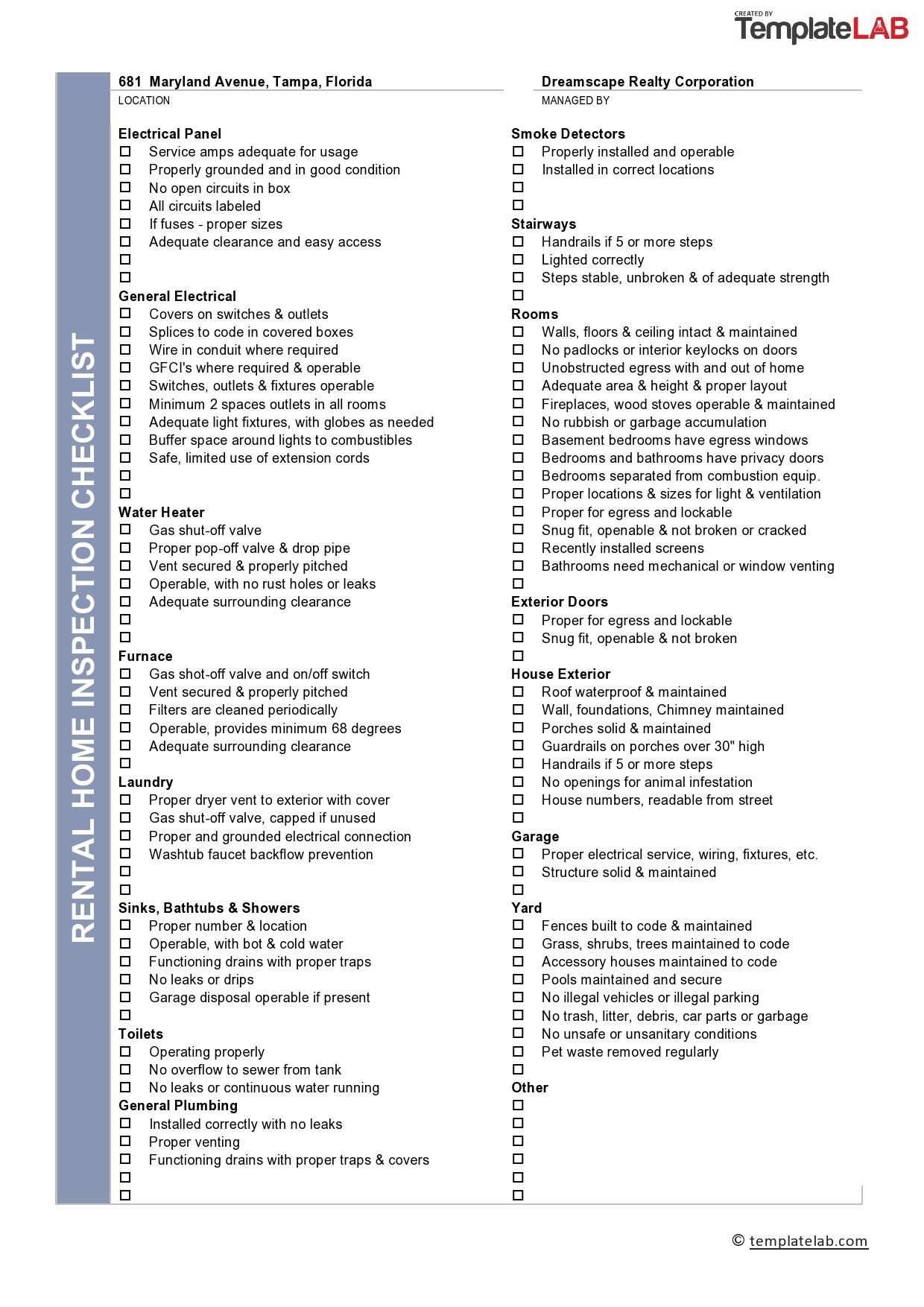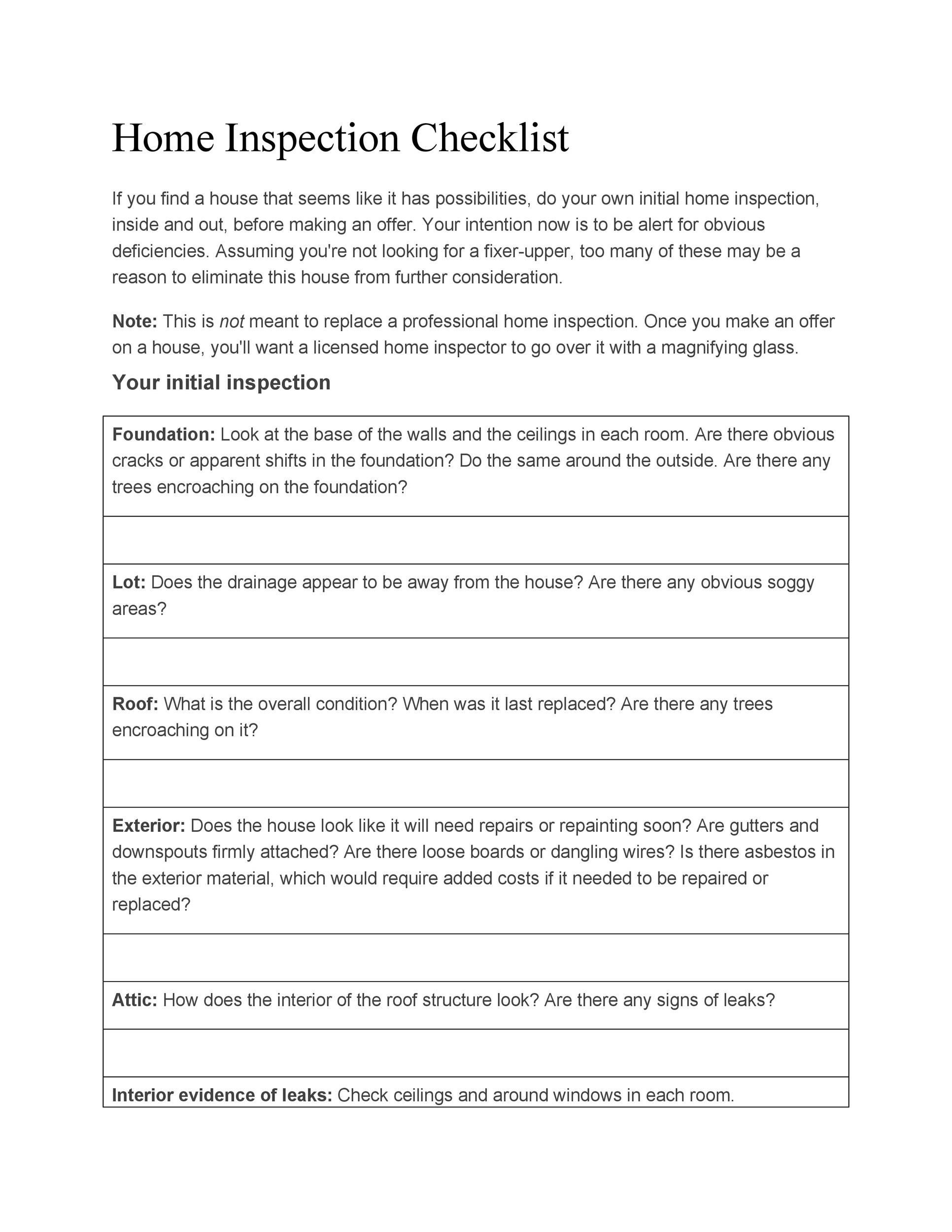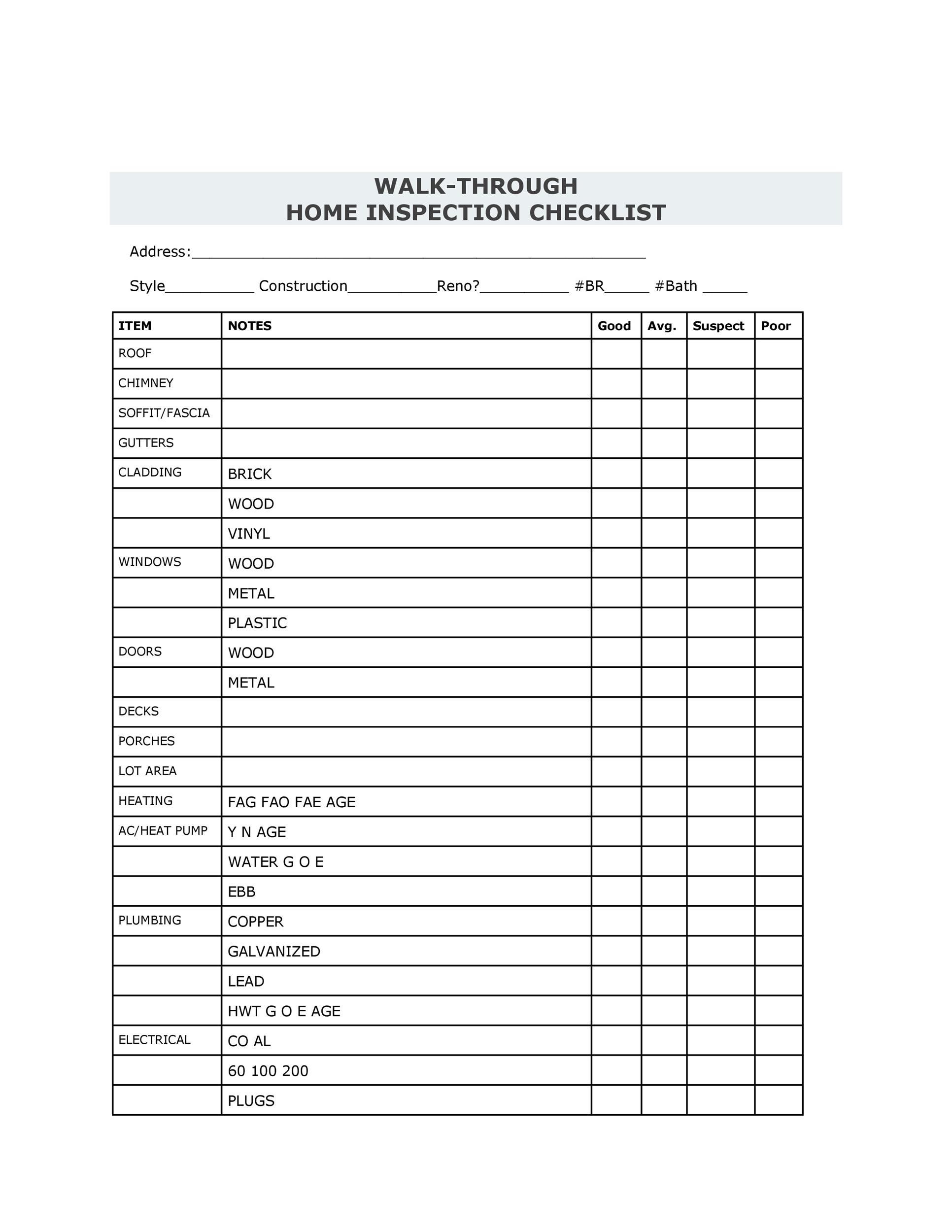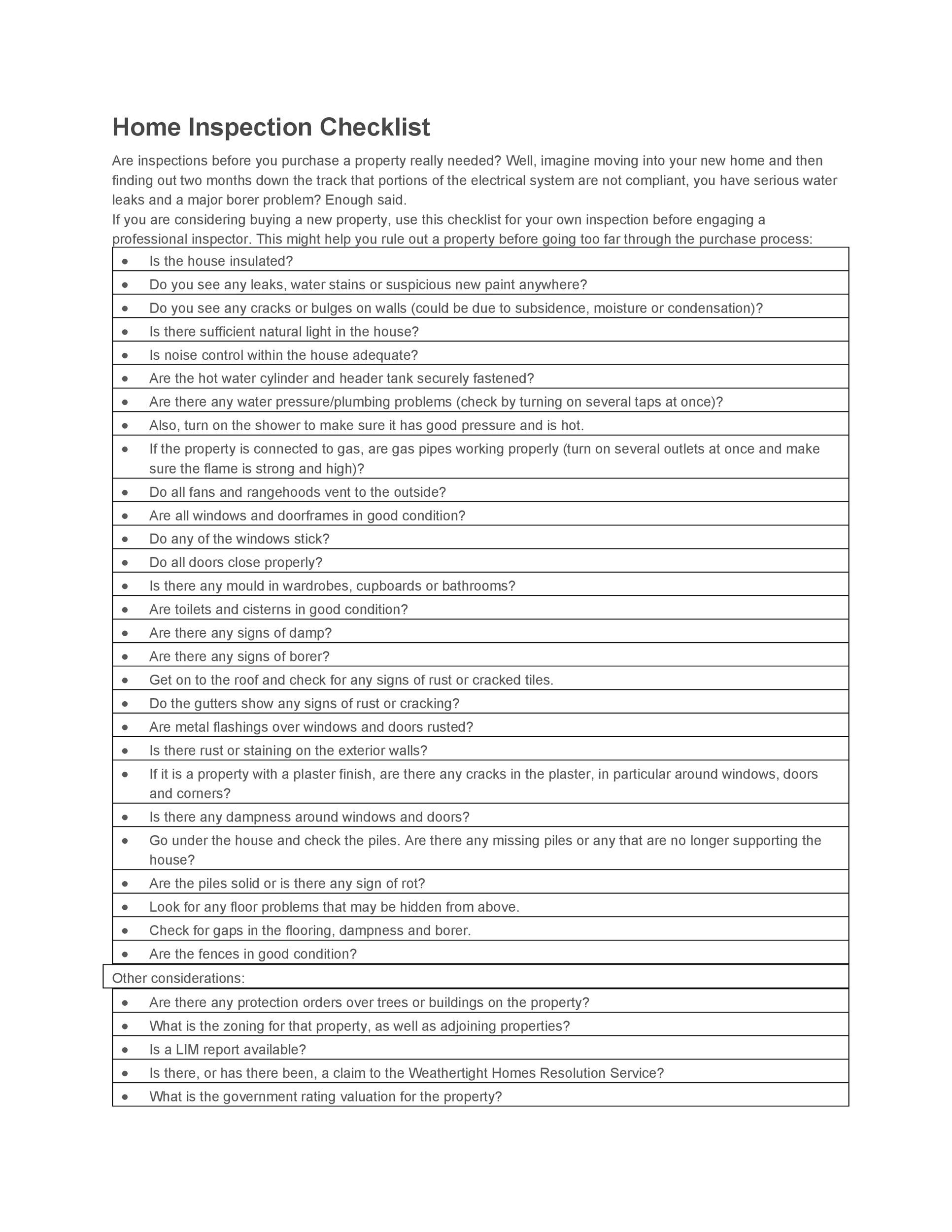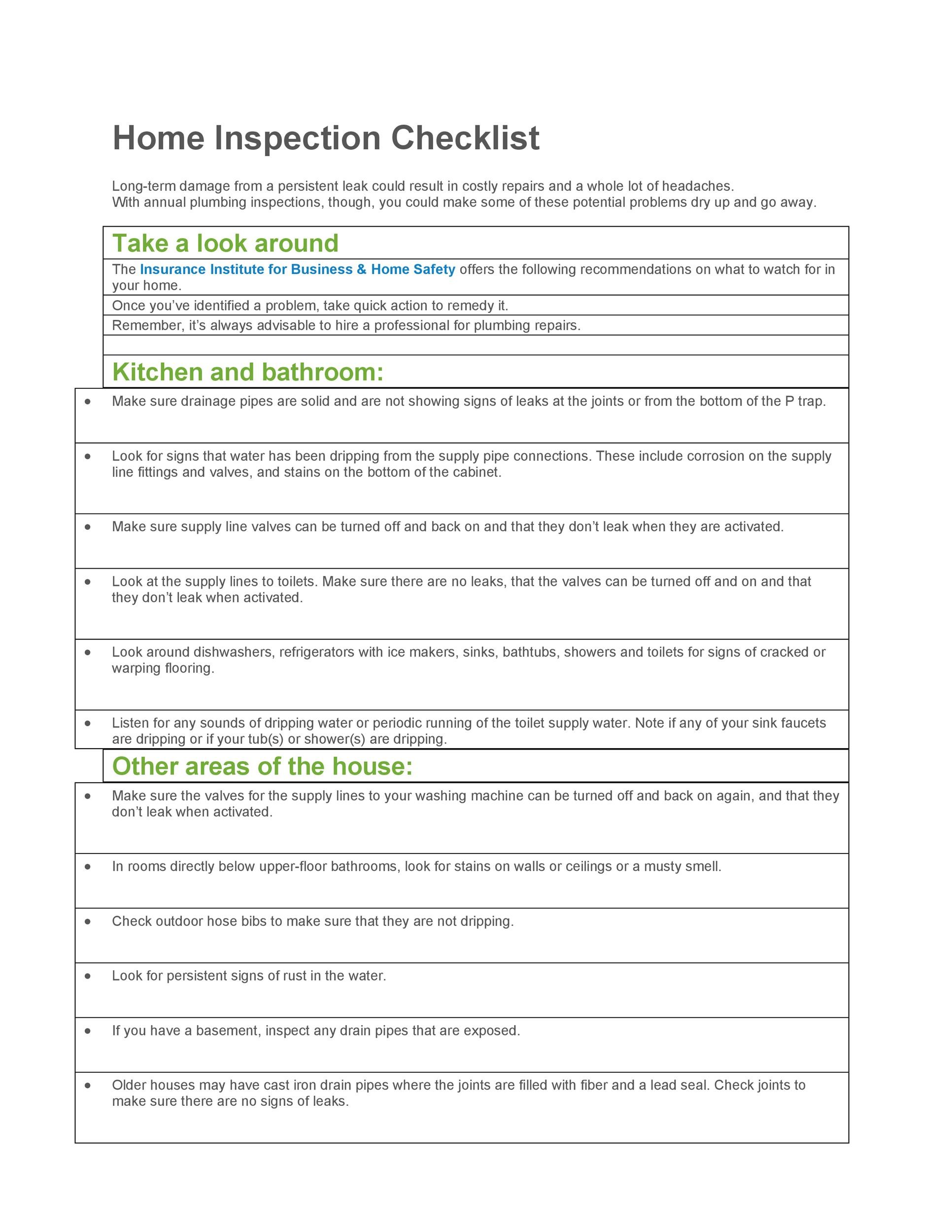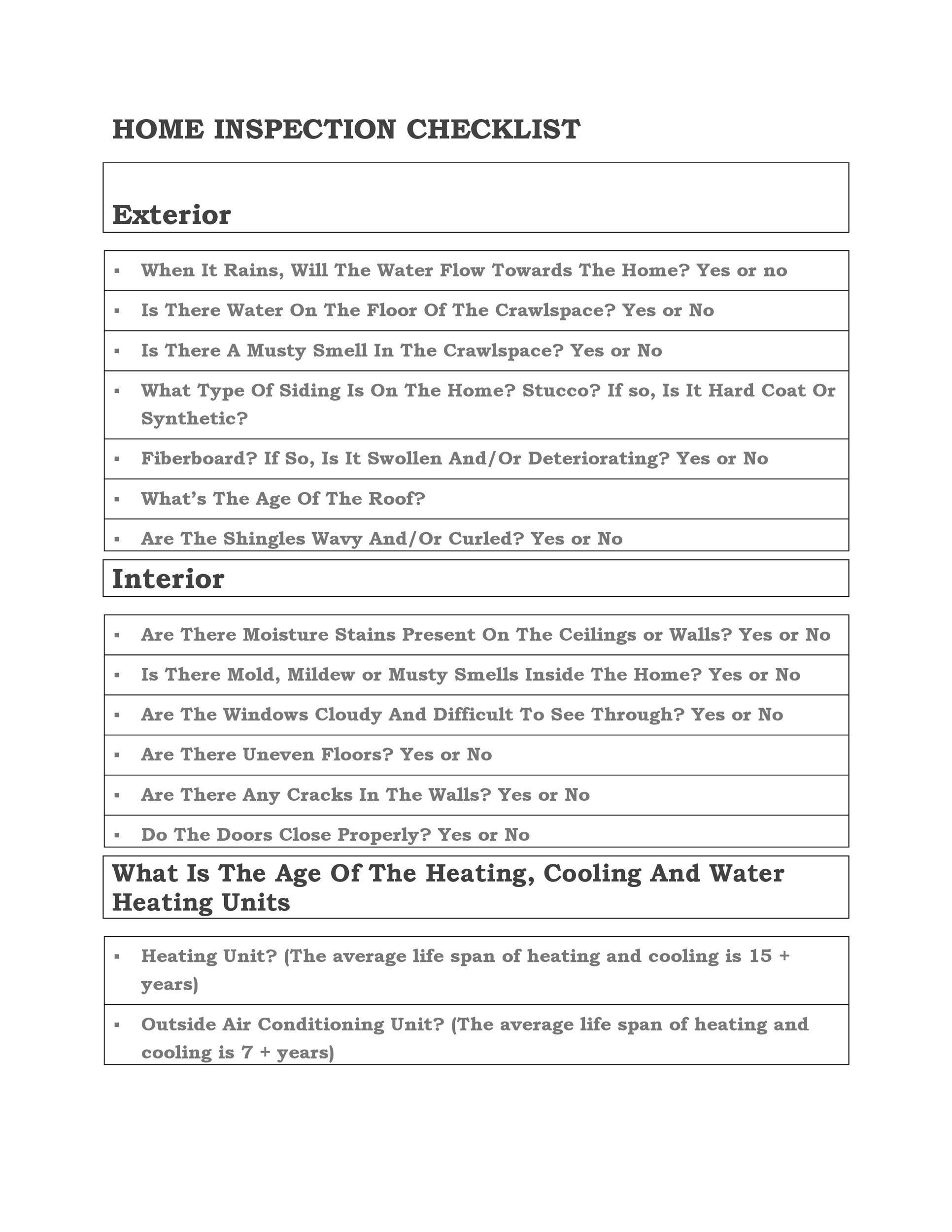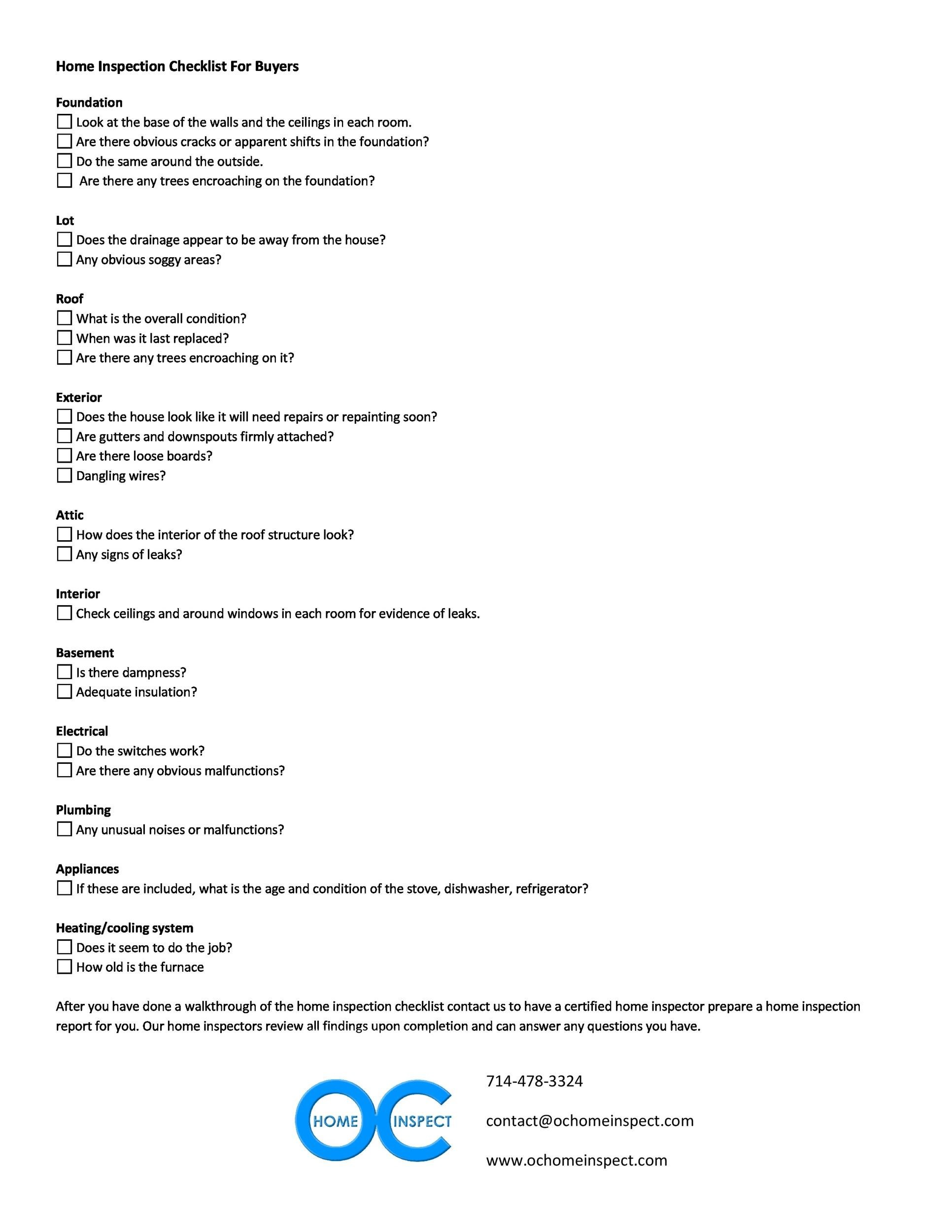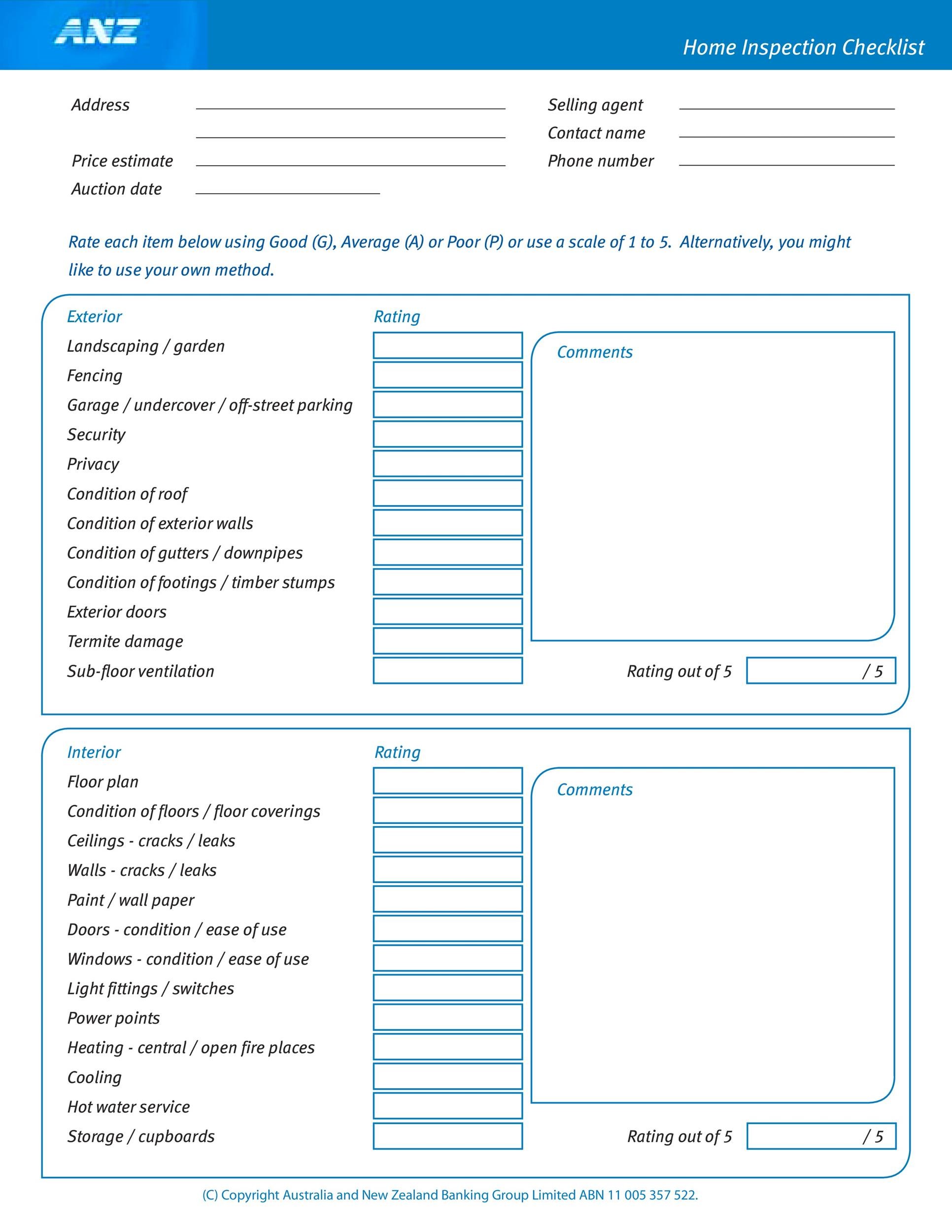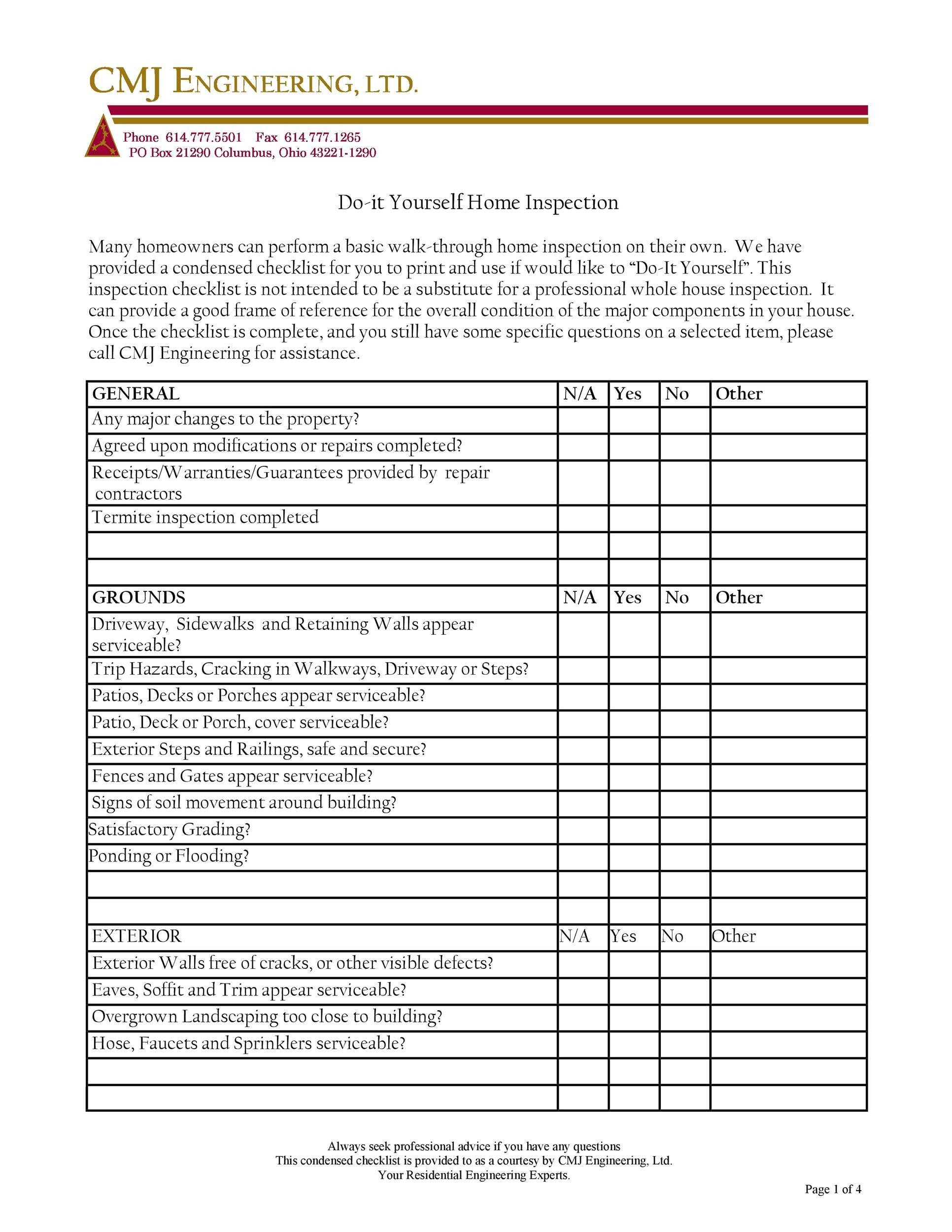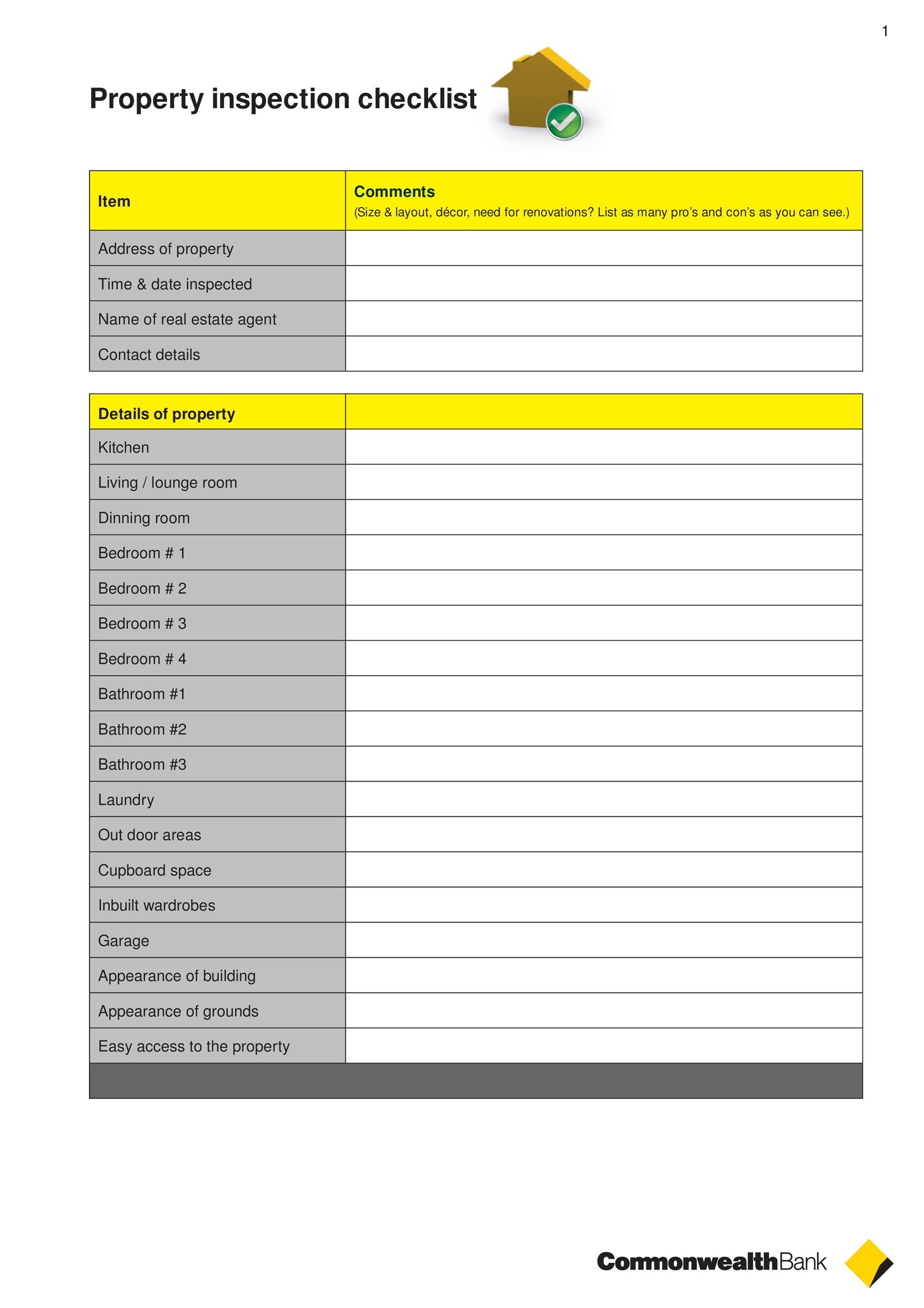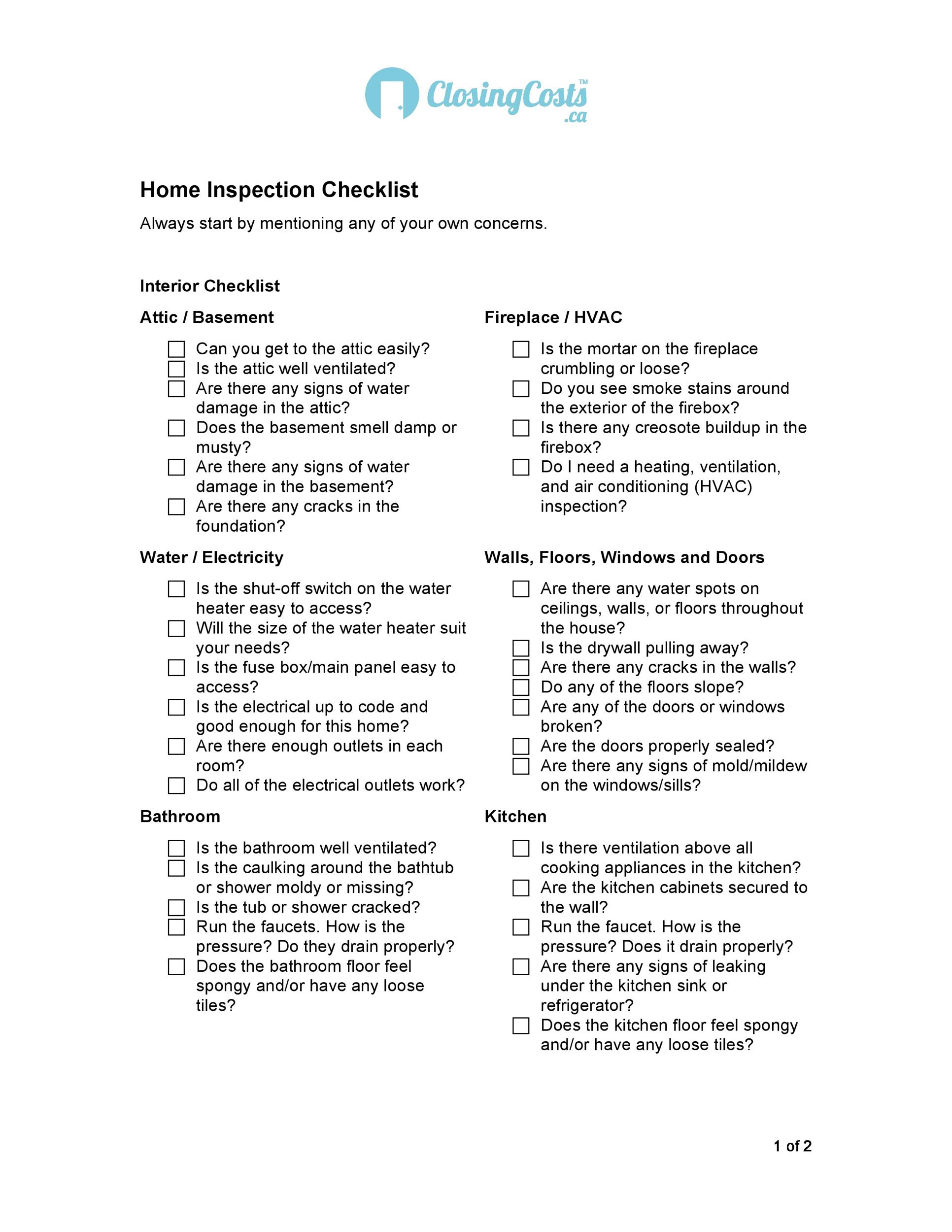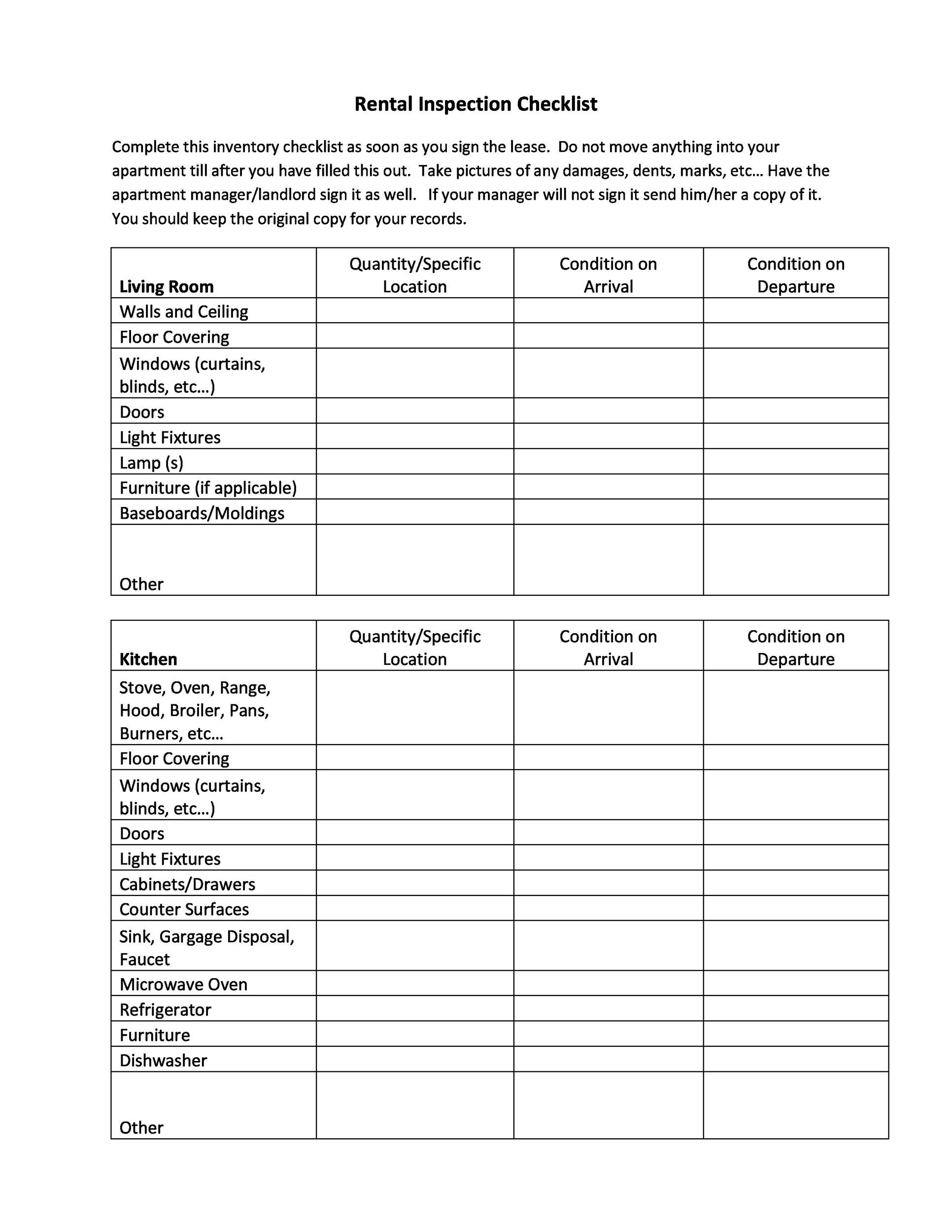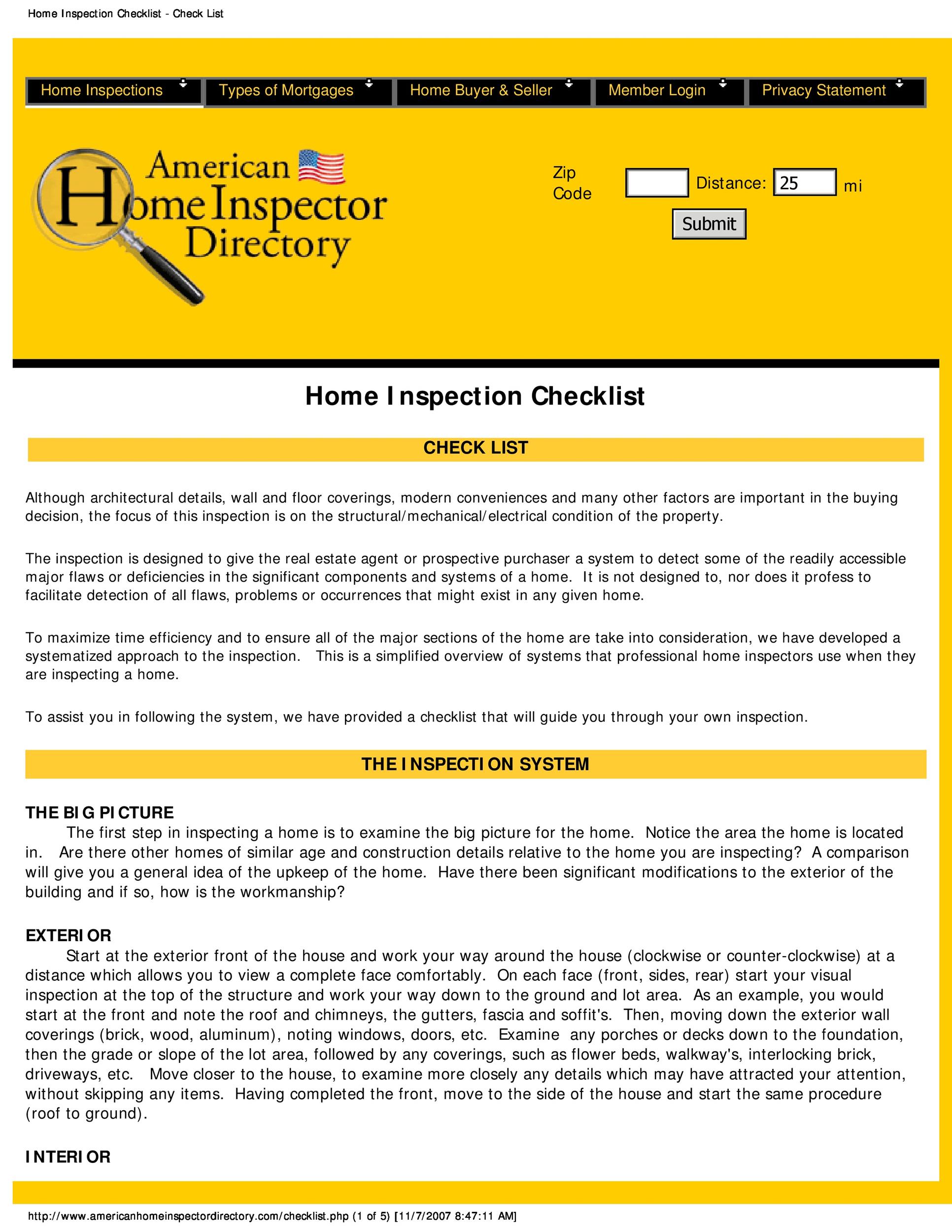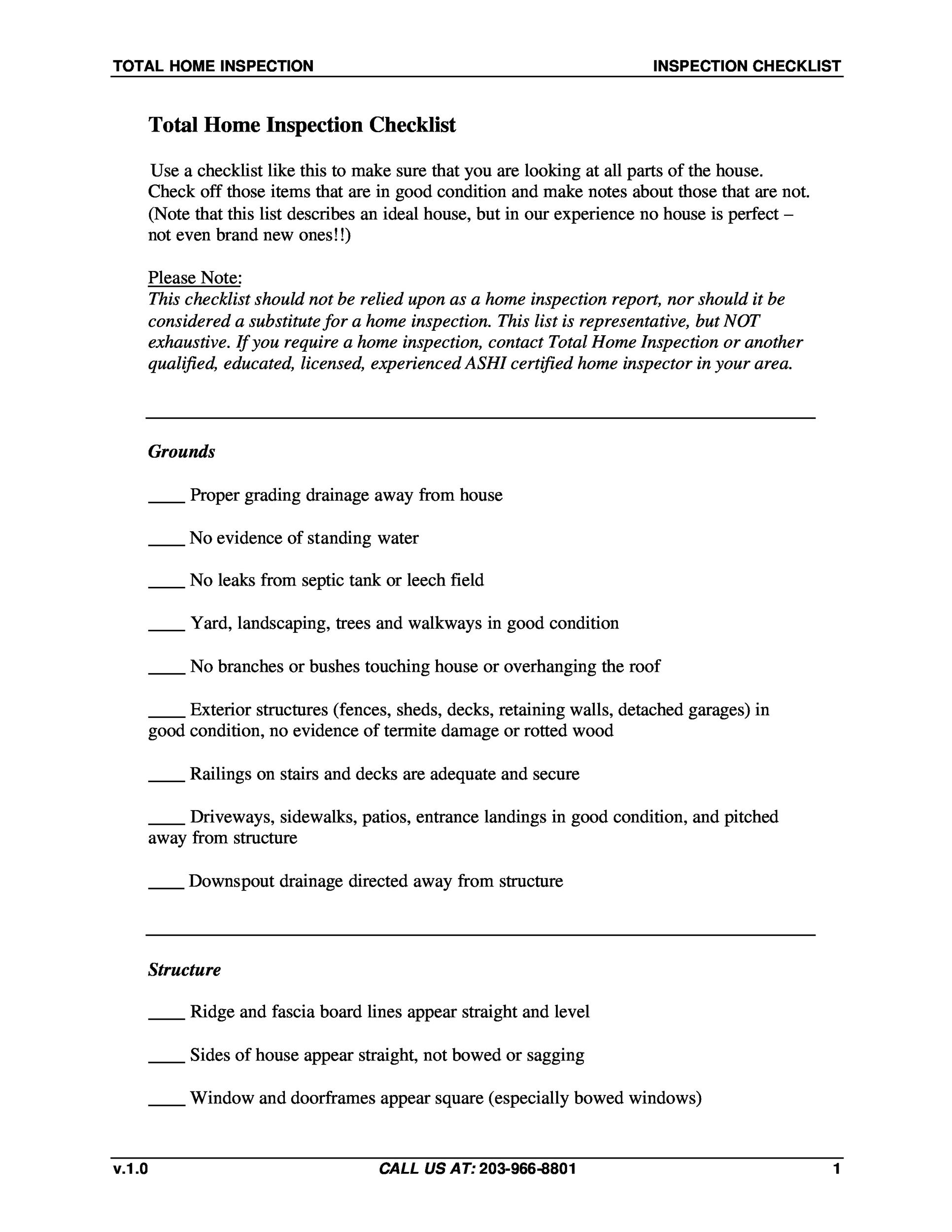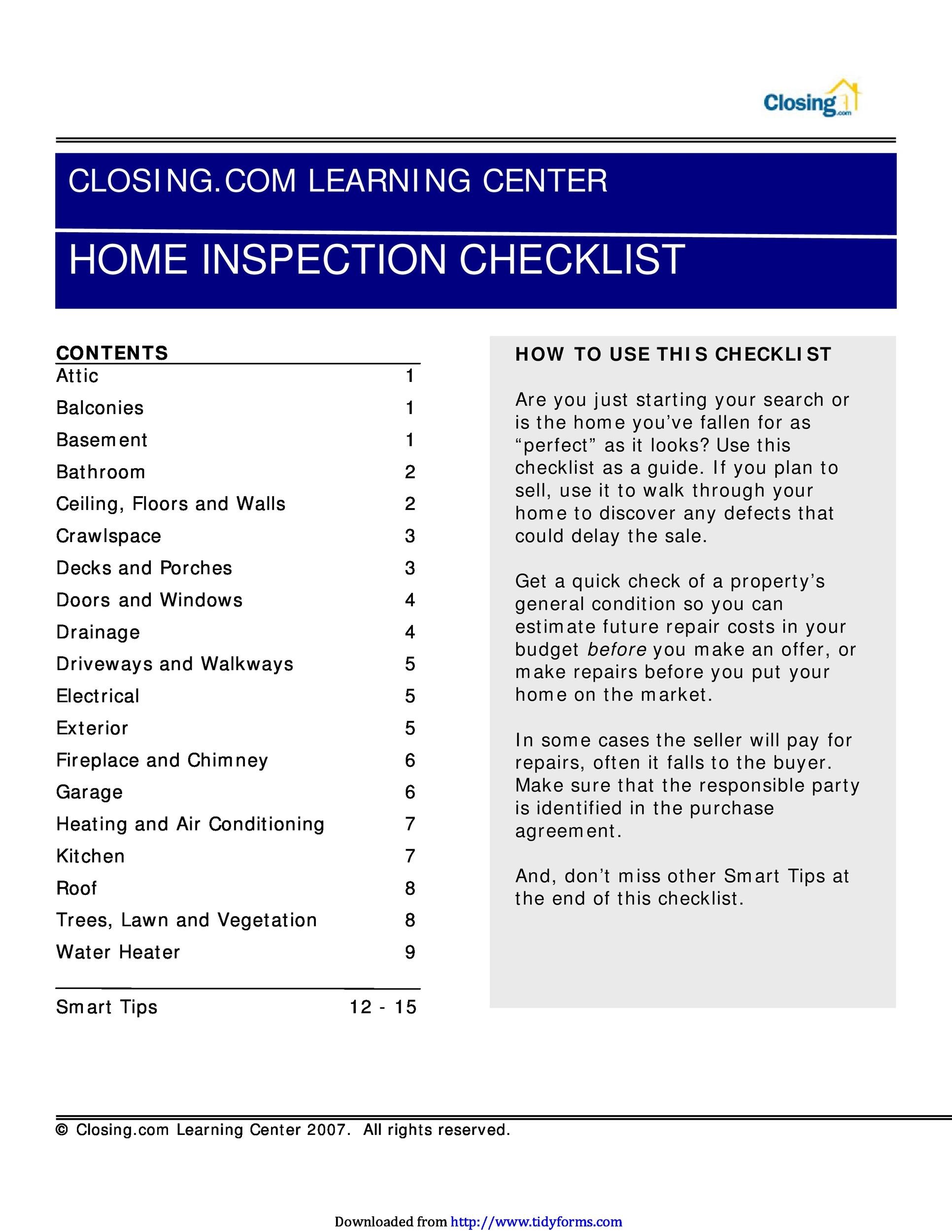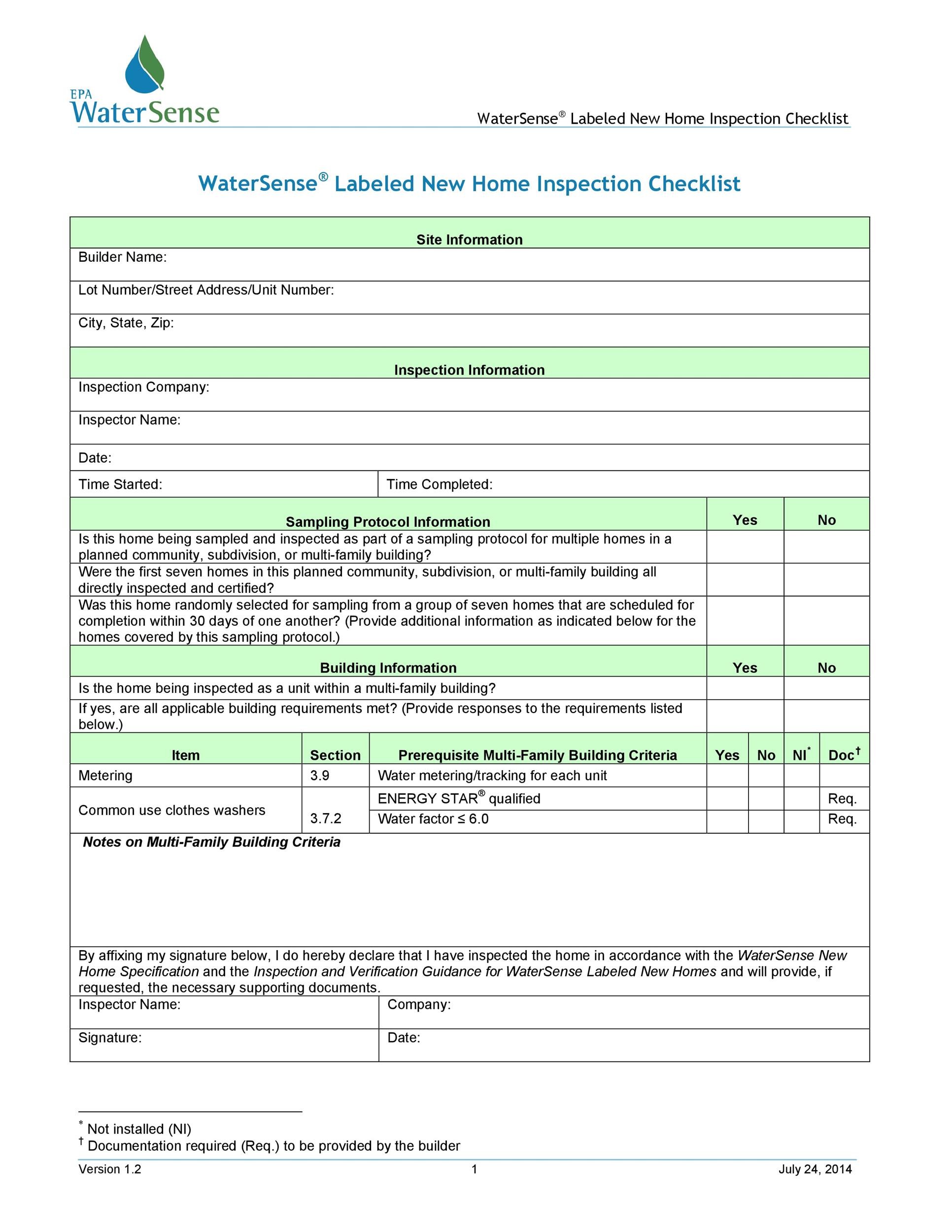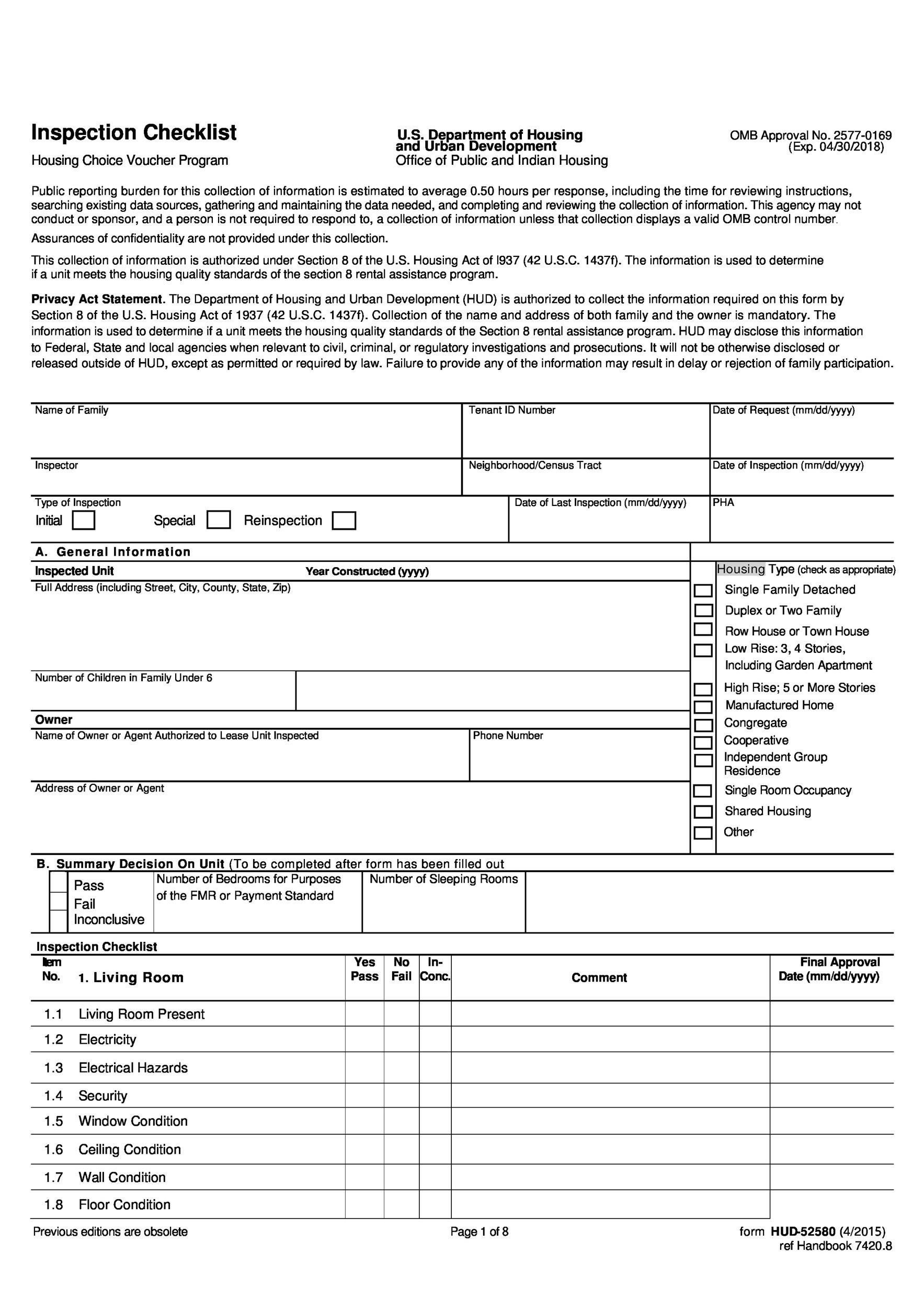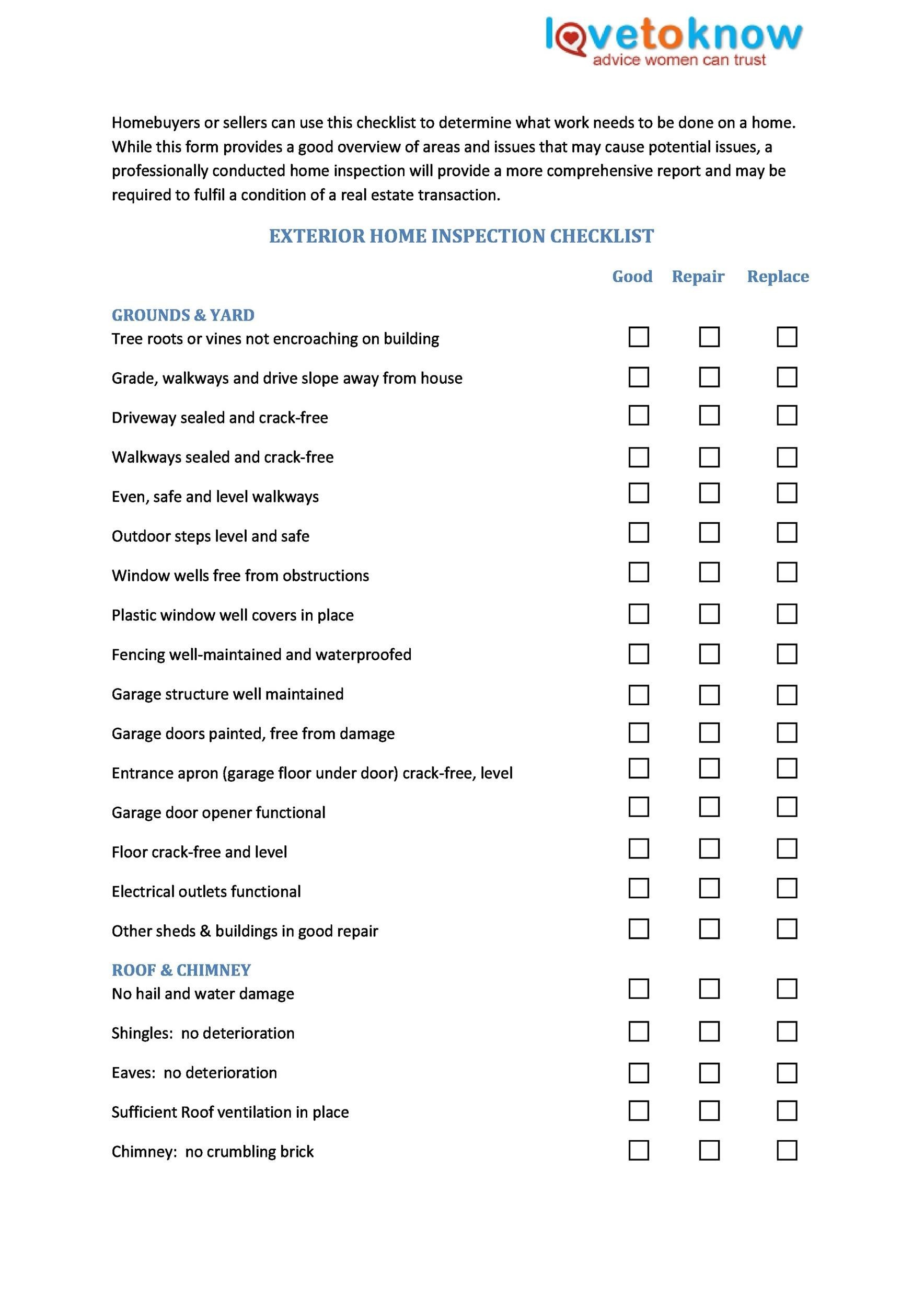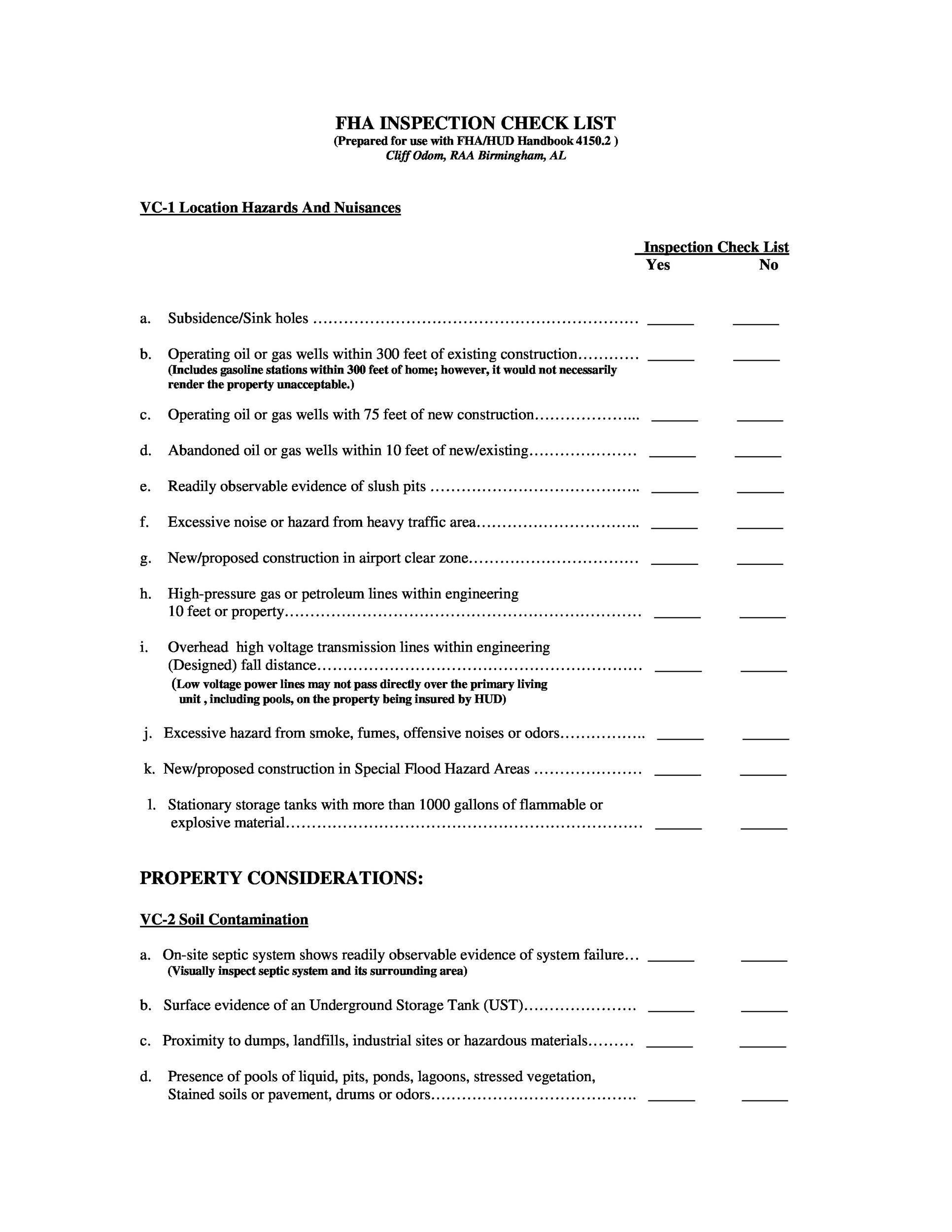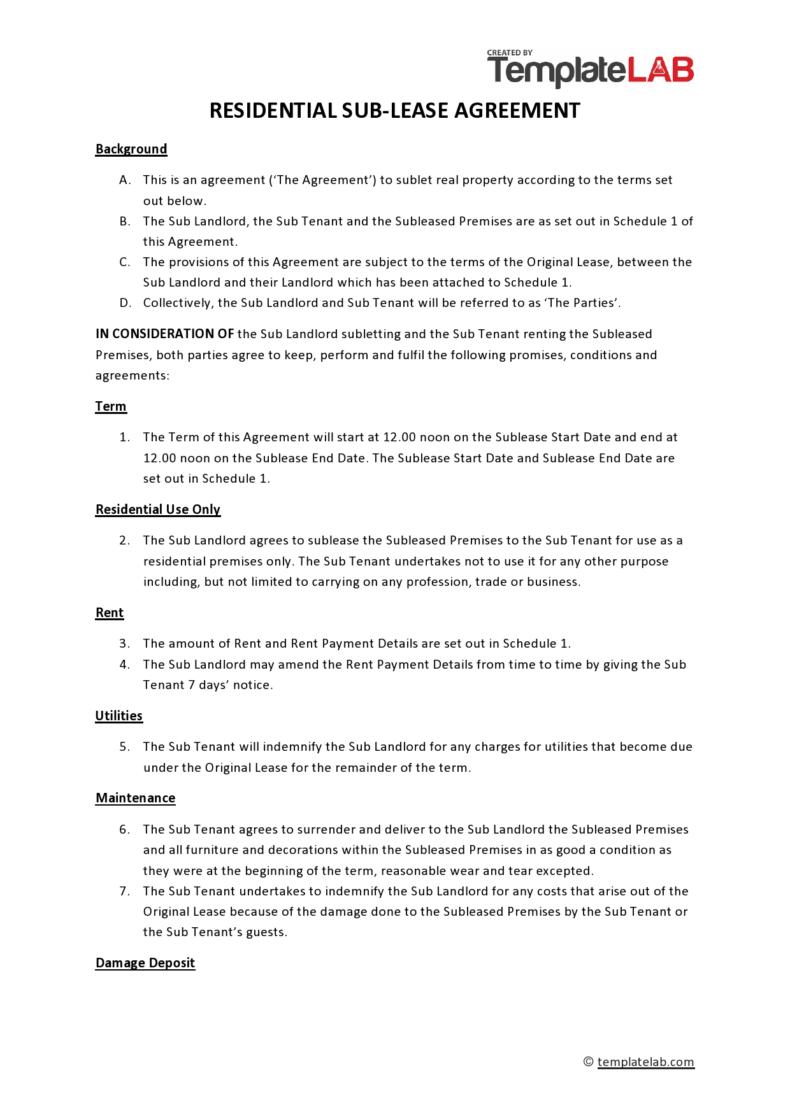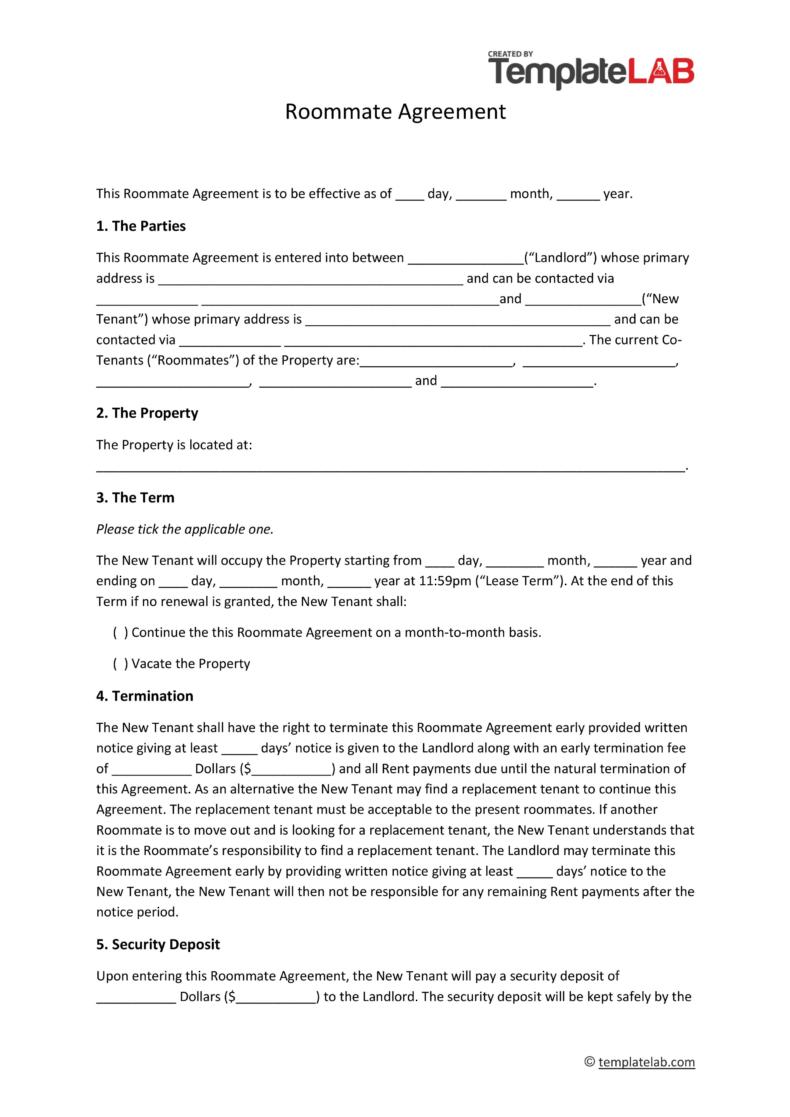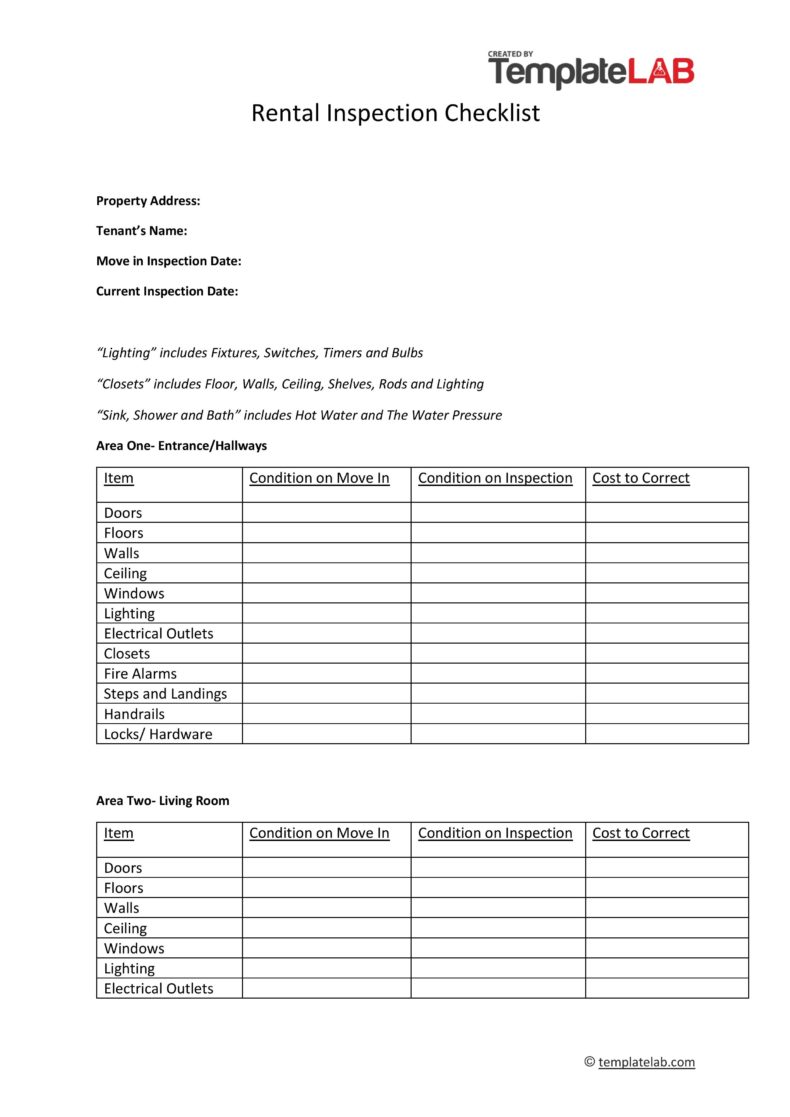A home inspection report can be useful for many reasons. Whether you are selling a home or you are looking to move into a rental, you might want to be sure that you have a home inspection report on hand before you make the decision to sell or move in. Home inspection processes are common for a variety of real estate transactions as well.
Real estate agents are familiar with the home inspection report process, but you can also make sure that you have your own home inspection report on hand for rentals that you operate or places that you might want to sell or rent. The home inspector is not the only one who can have a home inspection report on hand during the home buying process or the home inspection process.
Table of Contents
- 1 Home Inspection Checklists
- 2 What to Include in a Home Inspection Checklist
- 3 What is a Home Inspection Checklist Used For?
- 4 Printable Home Inspection Checklists
- 5 How to Write a Home Inspection Checklist
- 6 What Are the Components of Home Inspection Checklist
- 7 Will my Personal Home Inspection Hold Up in Court?
- 8 Professional Home Inspection Checklists
- 9 Can I Use a Personal Home Inspection When I Move Out of a Rental?
- 10 The Home Inspection Process Can be Very Useful for Many Reasons
Home Inspection Checklists
What to Include in a Home Inspection Checklist
There are many details that can be included in the home inspection process. The use of the property might impact the things that you include in your home inspection contingency report. Home inspection processes can vary based on the kind of home that you are inspecting as well. An apartment might not have as many amenities to check on as a home, and there are different considerations for safety issues that might impact a home compared to an apartment.
A real estate agent or certified home inspectors are the most common parties to provide these kinds of services for those who need home inspections to be completed. Knowing what to include in this kind of checklist can make it easy to make your home inspection contingency document or your own home inspection documents.
What is a Home Inspection Checklist Used For?
The home inspection process is common for sales of homes as well as being common in home inspection for rental purposes. The house inspection process can help you decide if you want to buy a house or move into a rental. It can also be part of the process that is used to make sure that a tenant does not owe money for repairs after they move out of a location that you operate as a rental.
While you might have to hire a home inspector for this kind of work, you can save yourself the home inspection cost if you are not required to have a professional home inspection checklist involved in the home sales or renting process. A home inspection can be used for many different reasons, and not all of them require that you use the list that a professional home inspection company provides.
Printable Home Inspection Checklists
How to Write a Home Inspection Checklist
If you want to write your own home inspection document, the process is easier than you might think. You will need to be sure that you are thinking about all of the various parts of your home or property that might need attention, such as repairs. If you do not include all of the various parts of the property, you might be missing important steps in the process of verifying that major repairs are not needed before you can move in or rent your property out again.
Before you begin writing a home inspection document, think about these details:
- How is the property used? Is it a rental, or are you looking to buy? Are you a real estate agent who is creating documents for use during the sales process? Are you going to allow renters to sublet living space on the property? All of these considerations can impact the way that you craft your home inspection contingency documents.
- Make sure that you write down a list of all of the parts of your house before you create the house inspection checklist. You will need to remember the roof, appliances, flooring, and various other parts and spaces inside and outside the home. Home inspections are not conducted just based on a few small parts of the house. You will need to have a comprehensive list of the various areas of the property that need to be examined before you make your checklist.
- Additional inspections might be needed if things like the air conditioning, the heat, or other home systems are not working correctly. You can use the home inspector process to diagnose an issue with these systems, but you will likely need to secure the help of a different kind of inspection report to verify if the system needs to be repaired or not.
- Your home’s location can impact the kinds of inspections that need to be done. If you have extreme weather or possible issues like flooding or fire risk that can impact the health of your home, you will need to include in your inspection results information about the well-being of preventative measures for these considerations. These kinds of problems can be deal breakers when it comes to sales, but in the instance that you are providing home inspections for rental purposes, these preventative measures just need to be fully operational at all times to protect the well-being of the property.
What Are the Components of Home Inspection Checklist
There are many ways to create the average home inspection checklist. Home inspectors often use templates that have been provided by the company that they work for. These templates can look different depending on which company created them. You will often be able to look at both home inspectors documents and home purchase contract examples as you build your own home inspection guide.
You do not have to have every single detail in your home inspection document that home inspectors might include, but the more thorough you are, the more effective you will be as your own inspector. Hiring a home inspector might not be necessary if you have a quality home inspection document in hand that you have created yourself.
- Start in the basement and work your way up to the roof. All of the various floors of the home or property might need different kinds of line items on your inspection day list. A home inspector will begin with the foundation or the basement and then move through the home’s major components to verify if there are issues that need significant repairs or future repairs. The more of your home’s physical components that you have included in your report, the better your inspection day process will be.
- Allow room in your checklist to write comments, observations, and issues down. These items can be deal breakers when you are renting or buying a property, and they can have an impact on the real estate contract that you draw up later on.
- Make sure that you save information from your own research about online resources that can help you to generate a written report that will help you to potentially lower purchase price involved in the sale or demand work be done to a rental before you move in. The more information that you have on hand during the inspection, the better.
- Include soffits and fascia as well as inspection of the paint, the surfaces in the home, and the condition of electrical systems or electrical outlets.
- If there is a yard or a lot out front, you need to document the condition of this part of the property as well.
- Include information about the required carbon monoxide detectors and other safety systems in the home or apartment. The requirements for these items might vary from state to state, so you will need to check on this information before writing this part of your guide.
- Mark down the materials that are used in various areas of the home as you inspect it. Visible plumbing and specific kinds of materials might not be allowed per state guidelines where you live. It can take time to add all of these details to your inspection, but it is worth getting into this much detail.
- If there are recreational areas on the property such as a pool, a tennis court, or other structures, you will need to check the condition of these parts of the property and document them as well. It is possible that you might need to have an expert come on the property and verify the condition of these items before you decide to proceed with a sale or a rental agreement.
If you have the purchase agreement in hand as you do your inspection, you will want to refer to it to see what the promised condition of the home is in this document. The seller’s disclosure statement can also be a big help as it might detail items that the homeowner is aware of at the time that the house has been listed for sale.
Rental properties often cannot have any known issues left unaddressed if they are being offered for rent. These kinds of details need to be addressed before you move in or agree to rent a property. Your inspection should take between two to four hours, so budget time to get through the entire checklist.
Will my Personal Home Inspection Hold Up in Court?
If you have taken the time to inspect a property that you want to move into on your own, you are probably wondering if the home inspection that you did yourself will hold up in a court of law. In some cases, your home inspector might have missed obvious problems with the home. It is not uncommon to sue a home inspector for negligence or inaccurate findings, and doing your own inspection can make this a much easier process.
While you might not want to take two to three hours to inspect a property on your own, you will be glad that you did so if your home appraisal or the professional home inspection was not completed correctly. The physical structure of a home is often inspected properly by professionals, but things like the home’s systems, septic tank, and HVAC system can sometimes be neglected in professional reviews of a property. Making sure as a home buyer that you have taken the time to protect yourself against this kind of issue with the home appraisal process can offer key benefits later on.
While your personal home inspection might not carry the same weight as that of a professional service, you can document issues with the property in pictures, and you can make sure that you have a checklist in hand that will guide you to verify the well-being of all of the various parts of the property. This is an important first step toward being sure that you are buying a home that is in good condition and ready for you to move in. Renters can protect themselves from dishonest landlords using the same process.
Professional Home Inspection Checklists
Can I Use a Personal Home Inspection When I Move Out of a Rental?
Another common area where a personal home inspection can be very useful is when you move out of a rental property. Many landlords will use any excuse to keep the deposit that you placed on a property when you moved in. These are the reasons that you might want to do your own inspection and collect pictures before you move out of a property:
- To get your deposit back
- To protect yourself against paying for repairs that have nothing to do with your time living in the property.
- To ensure that you have proof of the condition of the property when you moved out.
- To make sure that you don’t forget any of the necessary steps related to surrendering a rental back to the owner or property manager.
The Home Inspection Process Can be Very Useful for Many Reasons
There are many reasons that you might want to use a home inspection process for your own personal checklist before you move into a home, buy a home, or leave a rental. This document can take some time to prepare, but it can be indispensable for many reasons for those who are renting, buying, or managing property. The basic template for this kind of checklist can offer you the chance to create a document that will come in handy for many purposes.

